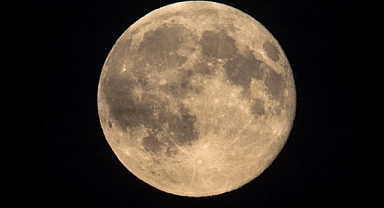Analysts highlight that unprecedented early voting and adjusted polling methodologies—aimed at correcting prior errors—may be contributing to these slim margins and could set up a volatile Election Day outcome. Notably, the polling-analysis site FiveThirtyEight’s forecast remains virtually unchanged, suggesting Trump has a slight edge in a simulated 100-election outcome.Some experts believe that polling herding may be in effect, where pollsters, cautious of large disparities, adjust findings to avoid being perceived as outliers. Analysts Josh Clinton and John Lapinski argue that new methodologies, such as weighting by partisanship or past votes, could be flattening natural variations, leading to improbably close poll results in battleground states like Pennsylvania, Michigan, and Wisconsin. As Election Day looms, voter turnout among seniors, particularly in Pennsylvania, suggests a Democratic advantage, though this trend may not be conclusive.Amidst the tight race, the absence of larger margins signals potential surprises come Election Day. Experts warn that cautious adjustments by pollsters may paint an inaccurate picture, underscoring the unpredictability of this high-stakes election.As the U.S. presidential race heads into its final days, the polling deadlock between Republican Donald Trump and Democratic candidate Kamala Harris continues to capture national attention. Despite a turbulent week of campaign rallies, pointed rhetoric, and high-profile endorsements, poll numbers remain remarkably stable, with each candidate locked in a near-equal contest both nationwide and in key battleground states. Experts are increasingly questioning whether this polling deadlock reflects actual voter sentiment or if it’s due to cautious adjustments by pollsters, seeking to avoid past missteps in an election marked by unprecedented voter turnout.National polling averages show Harris holding a slim one-point lead over Trump, a margin so narrow it falls within most polls' margins of error. Battleground states remain similarly close, with Pennsylvania—a state carrying significant electoral weight—showing an exact tie between the candidates, while Harris maintains slim leads in Michigan and Wisconsin. Trump holds a slight edge in North Carolina, Georgia, and Arizona, with Nevada polling showing an almost negligible margin in Trump’s favor.While over 65 million Americans have already cast early ballots, experts note that early voting trends offer little concrete predictive power. In Pennsylvania, for example, a higher turnout among registered Democrats may suggest an advantage for Harris, especially among senior voters, but how this will translate into Election Day results remains uncertain. Polling adjustments designed to address past issues—such as weighting responses based on partisanship and past voting behaviors—might be contributing to the polling consistency, potentially masking real shifts in voter opinion.Commentators from the polling-analysis site FiveThirtyEight have noted that despite a close race, there’s reason to believe polling may be underreporting true variability. Their model shows Trump with a slight edge over Harris, suggesting he would win in 53 out of 100 simulated election outcomes. However, Josh Clinton of Vanderbilt University and John Lapinski, NBC’s director of elections, suggest that pollsters might be unintentionally “herding” around state averages by adjusting wide poll margins, a phenomenon seen particularly in Pennsylvania where nearly 40% of polls show a margin of a single point or less.In some cases, pollsters may be wary of showing substantial leads for either candidate, perhaps to avoid repeating past miscalculations. As Clinton and Lapinski explain, some polling adjustments may be contributing to the appearance of an improbably tight race, with battleground states showing consistent one-point margins, even when larger variations might be expected due to random polling variance.With Election Day around the corner, the close polling numbers raise the possibility of a dramatically different outcome than predicted. Despite weeks of campaigning and escalating political tensions, the consistency in polling data has left many experts with lingering questions about how the race will unfold. Whether the deadlock represents a true tie or an artifact of cautious polling adjustments, voters will soon determine which candidate prevails in one of the most closely watched elections in U.S. history.
News
Yayınlanma: 03 November 2024 - 00:40
Experts Question Poll Results as Deadlocked U.S. Presidential Race Enters Final Days
In the closing days of the U.S. presidential election, polls show Donald Trump and Kamala Harris in a near tie, with battleground states reflecting similar margins. Despite a week filled with intense campaign events, from heated rallies to celebrity endorsements, neither candidate has broken from the polling deadlock. Experts suggest the tight numbers may reflect a conservative approach by pollsters wary of past miscalculations rather than actual voter sentiment.
News
03 November 2024 - 00:40
These news may also interest you









